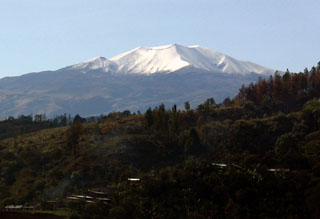Report on Purace (Colombia) — 15 January-21 January 2025
Smithsonian Institution / US Geological Survey
Weekly Volcanic Activity Report, 15 January-21 January 2025
Managing Editor: Sally Sennert.
Please cite this report as:
Global Volcanism Program, 2025. Report on Purace (Colombia) (Sennert, S, ed.). Weekly Volcanic Activity Report, 15 January-21 January 2025. Smithsonian Institution and US Geological Survey.
Purace
Colombia
2.3095°N, 76.3948°W; summit elev. 4650 m
All times are local (unless otherwise noted)
The Servicio Geologico Colombiano (SGC) reported that seismic tremor at Puracé increased at 2356 on 19 January with events located in the NW part of the Los Coconucos volcanic chain. An ash emission rose 1.4 km above the Curiquinga crater rim and drifted SW, causing a notable sulfur odor in the towns of Puracé (11 km NW) and Coconuco (12 km WNW), along with ashfall in Coconuco, Timbío (34 km WNW), Popayán (30 km NW), and Sotará (23 km W). The emission was detected by pressure sensors, was visible in webcam images, and was observed by nearby residents. A significant increase in sulfur dioxide emissions was detected in satellite data and from instruments at the summit. Deformation was also detected at the Puracé and Curiquinga craters. On 20 January SGC noted that four vents producing gas emissions had been identified based on webcam images and reports by residents: two at Puracé and two new vents in Curiquinga. The Alert Level remained at Yellow (the second lowest level on a four-color scale).
Geological Summary. Puracé is an active andesitic volcano with a 600-m-diameter summit crater at the NW end of the Los Coconucos Volcanic Chain. This volcanic complex includes nine composite and five monogenetic volcanoes, extending from the Puracé crater more than 6 km SE to the summit of Pan de Azúcar stratovolcano. The dacitic massif which the complex is built on extends about 13 km NW-SE and 10 km NE-SW. Frequent small to moderate explosive eruptions reported since 1816 CE have modified the morphology of the summit crater, with the largest eruptions in 1849, 1869, and 1885.

